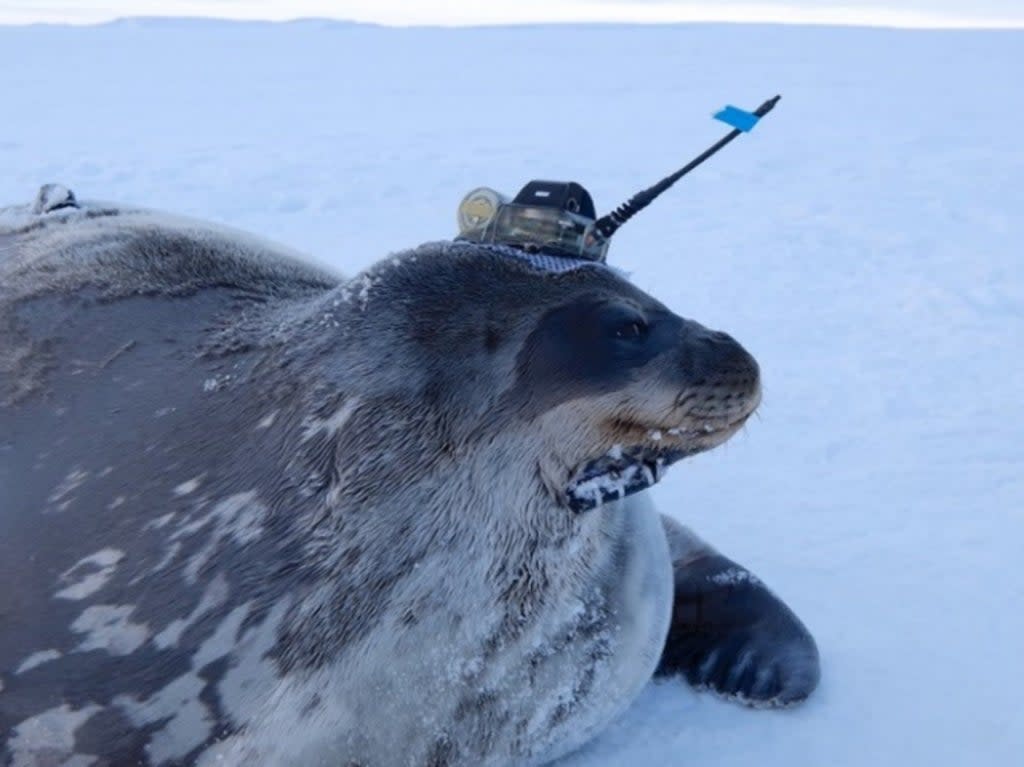Seals with sensors glued to heads employed as Antarctic researchers

Researchers in Antarctica have begun using seals with sensors attached to their heads to collect data from the continent’s ice shelves.
The unique method forms part of a bid to curb the obstacles boats have navigating these complex environments, which are so diverse on account of the large amounts of nutrients generated by the interactions between ocean, land and ice shelf.
A study explaining the animal-born investigation techniques, and their preliminary findings, was published in October in the journal Limnology and Oceanography.
The team of researchers, who belong to Japan’s Research Organisation of Information and Systems, used oceanographic data-logging equipment on the animals’ heads to get readings on water conductivity, temperature and depth (CTD).
“Previous studies using instruments strapped to migrating southern elephant seals and resident Weddell seals – a deep diving predator – had shown some interesting physical processes in Antarctic areas,” lead author of the study Nobuo Kokubun, who is an assistant professor with Japan’s National Institute of Polar Research, said.
“But even here, there has barely been anything investigating coastal areas covered by landfast ice.”
In order to record their data, the team attached CTD satellite relay equipment with glue to the heads of eight Weddell seals, from March to September 2017, and were able to determine new aspects of the Antarctic Ocean’s seasonal changes and the seal’s hunting habits.
The loggers, which weighed about half a kilogram and were the size of a small Rubik’s Cube, helped researchers conclude that warm and low salinity water appeared in the shelf’s subsurface during autumn – and that the depth of the warm water became deeper as the season progressed.
By combining their findings with meteorological and oceanographic modelling, the researchers also showed that “seasonally prevailing easterly wind during autumn causes a flow of off-shelf surface warm waters, as well as possibly [allowing] additional prey onto the continental shelf,” researchers said.
This is significant because, in eastern Antarctica, strong katabatic wind enhances sea ice production in the coastal polynyas (areas of open, unfrozen seawater surrounded by sea ice). Outside the polynyas, though, extensive sea ice attached to the shore tends to exist where predators such as Weddell seals and emperor penguins inhabit.
These ocean, sea ice and ice-shelf water exchanges – particularly those between deep warm waters coming from off-shelf areas, sea-ice zones that change with the season, and coastal polynyas – play important roles in biological production throughout continental shelf areas, the researchers noted.
However, much more data is needed to better understand the full effect of how and why both surface and deep waters from nearby off-shelf areas intrude onto the shelf and mix with local waters.
Scientists now hope to continue their use of seals to explore and log data about how the Antarctic coastal marine ecosystem is responding to the ongoing rapid changes in Antarctic sea ice caused by factors such as climate change.
Next, they want to go a step further and estimate the amount of water and prey being transported onto the shelves by the “easterly” wind-driven process.

